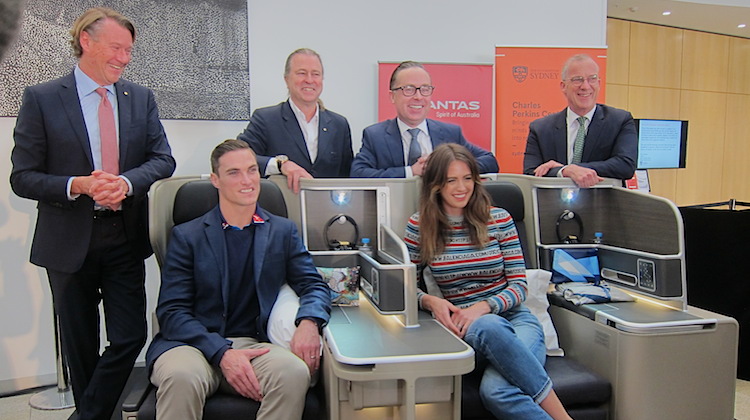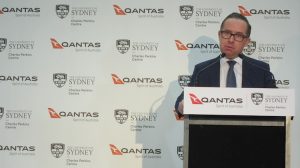
Qantas is seeking volunteers from its frequent flyer membership to don some wearable technology during their travels as part of efforts to learn more about the impact of long-haul travel on the passenger experience.
The study announced on Thursday is one element of a partnership between Qantas and the University of Sydney’s Charles Perkins Centre to better understand how elements such as movement, light, temperature, food and drink affect people before, during and after their flight.
The collaboration, which started about a year ago, initially focused on sleep during long-haul flights before being expanded to look at the entire journey.
The trial – where volunteer Qantas frequent flyers will be given wearable technology that gathers data while they are on flights – comes as Qantas prepares to begin Perth-London Heathrow nonstop flights in March 2018 with the Boeing 787-9.

Qantas chief executive Alan Joyce says partnership with the Charles Perkins Centre would help the airline “design and develop a range of new innovations and strategies to complement the Dreamliner experience”.
“We are going to invite some of our most frequent flyers to participate in research on those aircraft in order to give us information for improving the experience even more,” Joyce said at the official launch of the partnership at the University of Sydney on Thursday.
“We are investigating the use of wearables and other technology to analyse and determine the physical and mental stages and states of people during their journey.”
The study’s first two participants, model Jesinta Campbell and Australian Rugby Sevens Captain Ed Jenkins, were at the official launch at the Charles Perkins Centre on Thursday. The pair was reassured there was nothing to worry about by being part of the study.
“I have to say, this is not about taking anything away from customers. We will still have on board our aircraft the most amazing Australian wine, a selection of Australian beers and as much dessert as you could possibly want,” Joyce quipped.
“This is all about collecting information and giving information to our customers so they can make informed choices.”
Qantas posted a video detailing the partnership with the Charles Perkins Centre on its YouTube channel.
Some of the research that has already been undertaken has already been incorporated into the the planning for Qantas’s Perth-London Heathrow flights.
Specifically, the research has highlighted the intensity and wavelength of cabin lighting that was ideal for certain stages of the 17-hour journey linking Australia and Europe. Even the showers at Qantas’s Perth premium passenger lounge will feature specific lighting designed to enhance their travel.
Charles Perkins Centre academic director Steve Simpson said the partnership focused on health and wellness for the entire journey.
“It is bringing together experts within the Charles Perkins Centre, experts in nutrition, in sleep, in physical activity in the evaluation of programs to understand the science of long-haul flight, to improve jetlag, to try and work out ways of improving wellbeing and health in the air, before and after you get to your destination,” Prof Simpson said.
“And to translate that new science, that new innovation ultimately through Qantas to passengers and of course the crew.”
Qantas consulting chef Neil Perry is also working with the Charles Perkins Centre as part of the partnership.
The first of Qantas’s eight 787-9s on firm order is due to arrive in October. The oneworld alliance member is expected to have four of the next generation aircraft by March 2018, allowing the commencement of the nonstop flight between Perth and London Heathrow.










